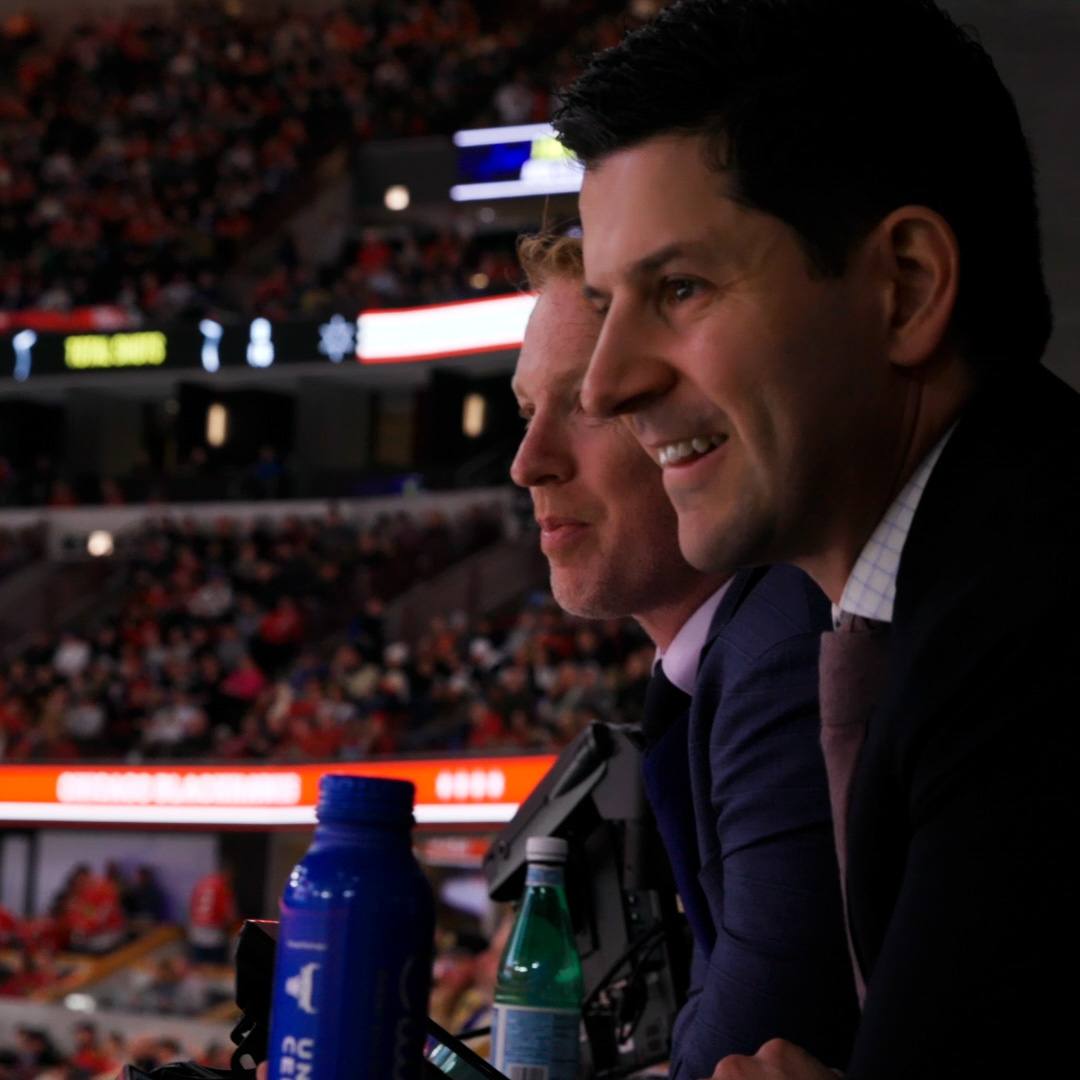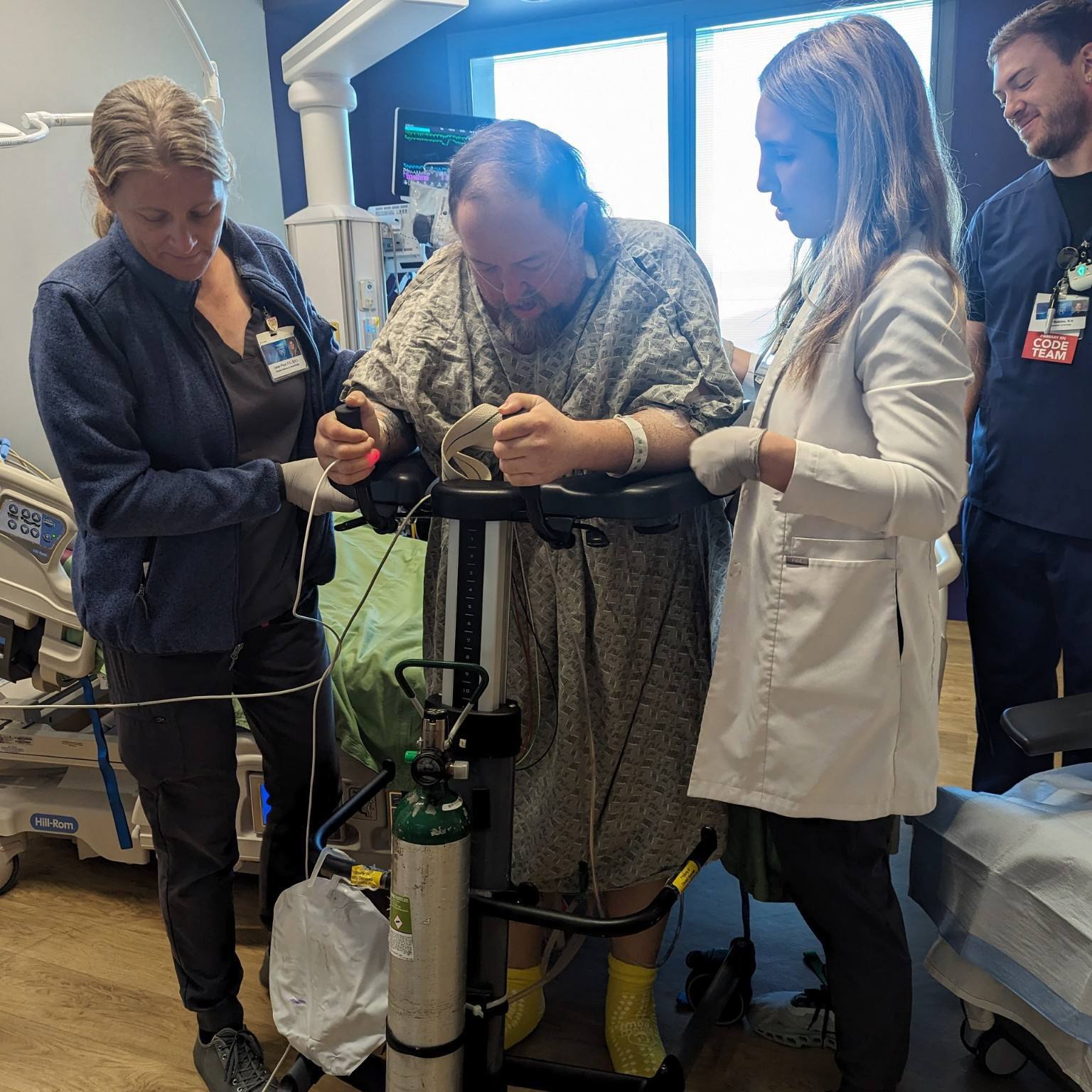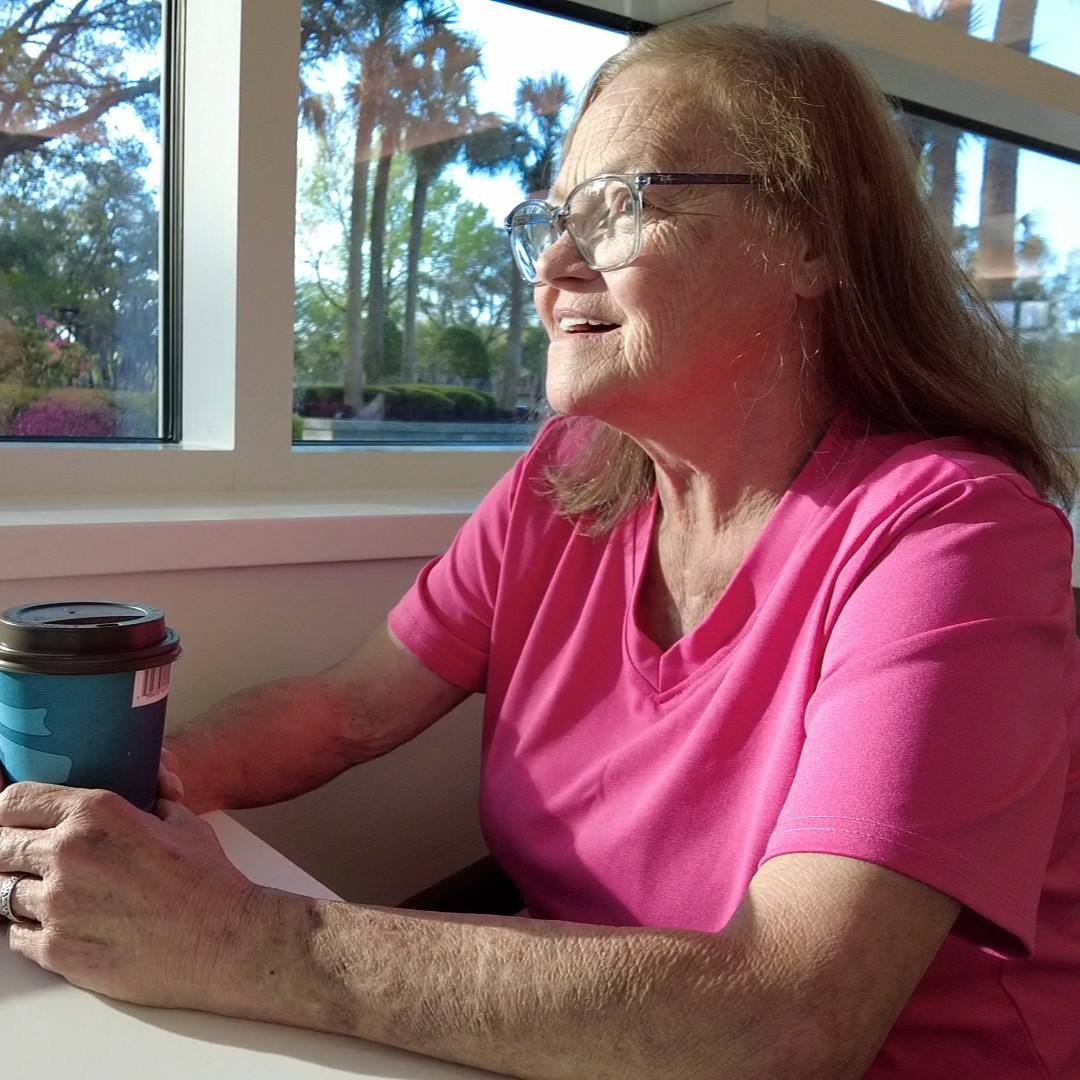 Dick Feller likes to joke about his medical escapades.
Dick Feller likes to joke about his medical escapades.
In just six years, Dick Feller had three open-heart operations, had both legs and an arm amputated, and was fitted with a left ventricular assist device, or LVAD, to keep his heart pumping. That's a lot for one person to take. But with unconditional support from his family and an unwavering sense of humor, Dick hasn't let the experience affect his attitude.
"I have three stumps and a pump," Dick, 71, jokes. "And because I didn't want things to get boring, I had gall bladder and kidney stone surgery in between those other procedures."
A complicated journey
Dick's medical journey is unique. In 2008, he sustained a dissection of his aorta. A complication occurred following an operation to repair the tear, and as a result, Dick developed gangrene in both feet and his right hand. Six weeks later, doctors were forced to amputate the affected limbs, leaving him to learn how to walk with prosthetic limbs and how to write with his left, non-dominant hand.
He eventually returned home to his wife, Andy, their children, and the horses they have been raising on their farm in Eau Claire, Wisconsin, for the past 24 years. Through it all, Dick's spirit and drive to move forward not only remained but were strengthened.
Unfortunately, Dick's health problems didn't end with the triple amputation. A stress test in 2009 indicated that he had three blocked arteries that would require him to have his second open-heart operation – a triple bypass – in less than a year. Dick's cardiologist implanted a defibrillator and a pacemaker. "He told me the devices probably bought me about five more years to live," Dick says.
Five years came and went without incident, but during the summer of 2014, Dick found himself experiencing acute shortness of breath and struggling to walk. When a variety of attempts to relieve his pain were unsuccessful, he was admitted to a local hospital.
"My cardiologist said there really wasn't anything else they could do for me," Dick says. "They didn't think I would survive additional operations."
"My cardiologist said there really wasn't anything else they could do for me. They didn't think I would survive additional operations." - Dick Feller
That's when a visiting surgeon suggested that Dick might be a candidate for a left ventricular assist device to help his struggling heart pump blood.
Dick's wife, all four of his children, and their significant others were present as the surgeon described the device, which is implanted in the chest cavity and helps pump blood from the left ventricle of the heart to the rest of the body.
"They peppered the surgeon with questions for at least 45 minutes," Dick recalls. "I never said a word."
Patients with these devices require around-the-clock care. Dick and his wife knew that having one implanted would change both their lives, but they agreed it was the best option to ensure they continued to live out their futures together. And they agreed on where Dick would have the surgery.
"Within an hour, I was in an ambulance on my way to Mayo Clinic in Rochester, Minnesota," he says.
A life-changing decision
Dick remembers his first visit to the cardiology unit at Mayo Clinic vividly. "That's when the true Mayo miracle began to happen," he says. "Teams of doctors came to see me. Hematology. Heart. Lung. It was amazing."
Dick says he was astonished by the collaboration that took place among the various specialties. "They didn't just look at a chart and walk out," he says. "They all talked to each other. It was unlike any hospital experience I'd ever had."
While Dick and his family felt the risk related to the surgery was worth it, Mayo Clinic cardiovascular surgeon John Stulak, M.D., initially was not so sure.
"I received a consult to visit with Mr. Feller for consideration of LVAD implantation," Dr. Stulak recalls, "and upon initial review of his clinical history, I was almost convinced that he was not an ideal candidate."
Dr. Stulak recognized that the odds were stacked against Dick. On top of the standard risks of the implantation surgery was the fact that he'd had two prior heart operations, a triple amputation, and required repair of two valves.
"On paper, it was an easy decision to turn him down for surgery," says Dr. Stulak. "This is what was going through my mind while I made the walk across the hospital to his room."
But Dick had strong advocates on the ventricular assist device team, who felt the option was a good one for the patient. "I call the coordinators on the VAD team 'my angels,'" he says. "With my health background, I knew doing surgery on me would be a huge risk. But the VAD team believed in this option for me, and they fought for it."
Dr. Stulak went to see Dick one evening after spending a long day in the operating room. And their conversation caused him to reconsider his assessment.
"Once I entered his room and sat on the edge of his bed, I instantly realized that talking to the patient is what drives decisions and not simply reading the medical record," John Stulak, M.D.
"Once I entered his room and sat on the edge of his bed, I instantly realized that talking to the patient is what drives decisions and not simply reading the medical record," Dr. Stulak says. "Mr. Feller and his wife were humble, realistic and very compelling. He and his wife had tears in their eyes, and Mr. Feller simply said to me, 'I am not ready to die.'"
Dr. Stulak spoke with Dick and his wife for almost an hour.
"After that visit, I had changed my clinical approach completely," says Dr. Stulak. "He was as much of an LVAD candidate as I had ever seen! During the preoperative training, Mr. Feller performed better at dressing changes using his mouth and hand prosthesis than other patients that I have seen who have all their limbs."
Dr. Stulak agreed to do the operation and Dick underwent 10 hours of surgery on Dec. 10, 2014. "Despite the technical difficulty the operation called for," Dr. Stulak says, "I had an eerie sense of calm because of how certain Mr. Feller was that he was going to get through things just fine, and return to his family and continue to love life."
In addition to having the device implanted, Dick required a third open-heart operation, aortic valve repair, and tricuspid valve repair.
"The operation was technically challenging," says Dr. Stulak, "but slow, steady progress led us finally to the ICU, at which time Mr. Feller began his road to recovery."
Dick spent 10 days recovering in the intensive care unit before he regained awareness of his surroundings. Then he relocated to the cardiac floor to begin rehabilitation. "They told me I would be in rehab for three weeks, but I went home in 10 days," he proudly recalls.
'A blessing in disguise'
Despite the discomfort and pain that follows any major surgical procedure, Dick's recollection of his time at Mayo Clinic and his follow-up visits is anything but negative.
"More good than bad came out of it in the end," he says. "When you go through an experience like that, you learn to appreciate life and all you have. My wife and I got to talk about how much we meant to each other, and our children grew much closer to one another."
Dick recently was given the go-ahead to resume his normal routine, including getting back to working on the farm, cutting grass, raising horses and cooking meals.
"I can do anything I want," he says, adding, "Except jump in a swimming pool. I would electrocute myself. And I probably shouldn't play tackle football."
"There's no way I'd be alive if it wasn't for Dr. Stulak, the VAD nurses, and Mayo Clinic. I am a walking example of the importance of family, faith and the miracle of modern medicine." - Dick Feller
But Dick did take one brave leap. "I'd never thought to get vanity plates before," Dick jokes. "But now I drive around with state-of-Wisconsin-issued license plates that read '3 STUMPS.'"
Dick recently accompanied a family member to her appointment at Mayo Clinic, where Dr. Stulak will be performing heart surgery on her this month.
Dr. Stulak recounts seeing Mr. Feller during that visit. "I walked into a patient's room to discuss mitral valve surgery, and here I see Mr. Feller and his wife, Andy, sitting at the bedside," says Dr. Stulak. "We immediately gave each other a big bear hug. The others in the room were a bit surprised by this, as I had not even had a chance to say 'hello' to my prospective patient. However, once they had a chance to let this soak in, everyone realized the gravity of that moment considering everything we had been through."
Dick looks forward to his return visits to Mayo Clinic, whether going for himself or accompanying others.
"Every time I come back, I feel as though I am visiting friends. I enjoy going to the hospital. How sick is that?" he jokes. "But seriously, there's no way I'd be alive if it wasn't for Dr. Stulak, the VAD nurses, and Mayo Clinic. I am a walking example of the importance of family, faith and the miracle of modern medicine."
HELPFUL LINKS
- Learn more about aortic dissection.
- View an illustration of a left ventricular assistance device.
- Explore the divisions of Cardiovascular Diseases and Cardiac Surgery.
- Request an appointment.
Related Articles








